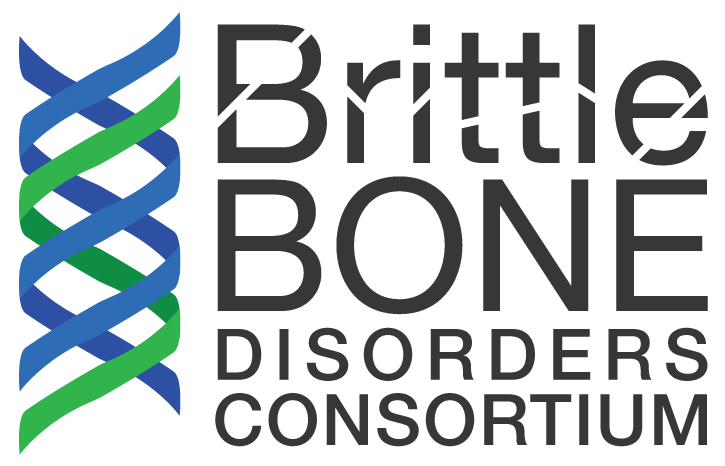What is Osteogenesis Imperfecta?
Osteogenesis imperfecta (OI) is a genetic bone disorder that is characterized by fragile or brittle bones. People with this syndrome have bones that easily break often with little trauma. There is a range of severity with this condition. People with mild OI can have bone fractures during childhood often following minor trauma. People with mild forms of the condition may also have a blue or grey tint to the part of the eye that is normally white (the sclera) and may develop hearing loss in adulthood. Affected individuals are usually of average or near average height. People with more severe OI may have bone fractures before birth resulting from little or no trauma. Additional characteristics of severe OI can include blue sclerae, short stature, hearing loss, respiratory problems, and a disorder of tooth development called dentinogenesis imperfecta. Individuals with severe forms of osteogenesis imperfecta, particularly type III, can have an unusually small rib cage and underdeveloped lungs. Babies and young children with these abnormalities have problems with breathing and often die shortly after birth. There are at least eight recognized forms of osteogenesis imperfecta. Genetic testing can be used to define the different forms of osteogenesis imperfecta. Most people with OI are born with weak connective tissue, or without the ability to make it, usually because of a deficiency of Type-I collagen. Most cases are caused by mutations in the COL1A1 and COL1A2 genes.
Who gets Osteogenesis Imperfecta?
This condition affects about six to seven per 100,000 people worldwide. The incidence of OI is estimated to be one per 20,000 live births. OI can affect males and females of all ethnicities.
What causes Osteogenesis Imperfecta?
Types I and IV are the most common forms of osteogenesis imperfecta. Most cases of osteogenesis imperfecta have an autosomal dominant pattern of inheritance, which means that having one copy of the altered gene in each cell is enough to cause the condition. Many people with type I or type IV osteogenesis imperfecta inherit a mutation from a parent who has the disorder. Most infants with more severe forms of osteogenesis imperfecta (such as type II and type III) have no history of the condition in their family. In these cases of severe OI, the condition is caused by new changes in the COL1A1 or COL1A2 gene. Because of this the risk of the unaffected parents of having another child with OI in the future is low.
Osteogenesis imperfecta can also show an autosomal recessive pattern of inheritance. Autosomal recessive inheritance means that two copies of the gene in each cell are altered. The parents of a child with an autosomal recessive disorder are usually not affected, but each carries one copy of the altered gene. Because of this they can have a one in four chance of having another child with OI with each pregnancy together.
Alterations in the COL1A1 and COL1A2 genes are responsible for more than 90 percent of all cases of OI and is dominantly inherited. These genes provide instructions for making the proteins that make up type I collagen. This type of collagen can be found in bone, skin, and other connective tissues that provide structure and strength to the body.
OI Type I can be caused by alterations in the COL1A1 or COL1A2 genes. These genetic changes cause a reduction in the amount of normal type I collagen made in the body causing bones to be brittle and to break easily. OI types II, III, and IV can also be caused by changes in either the COL1A1 or COL1A2 gene. These mutations typically change the shape of type I collagen molecules. A flaw in the structure of type I collagen makes connective tissues, particularly bone, weak resulting in the known features of osteogenesis imperfecta.
Another dominantly inherited form of OI, type V, is not caused by mutations in type I collagen. Instead, they are caused by mutations in the IFITM5 gene. We do not know the exact function of this gene, but patients with OI type V has unusual features including fracture heal with large amounts of calluses as well as hardening of some of the ligaments that connect bones.
A rare and recessively inherited form of OI called OI type VI can be diagnosed primarily by studying specimens directly from the bones of patients. Under the microscope, the bone shows a particular pattern with deficient mineralization or hardening of bony tissues. This is caused by genetic changes in the pigment epithelial derived factor (PEDF) gene that is encoded by SERPINF1.
Rare, recessively inherited, and severe forms of OI, Type VII and VIII, can be cause by changes in the CRTAP and LEPRE1 genes. The proteins made from these genes work together to package collagen into its mature form. Mutations in either gene interrupt the normal folding, packaging, and secretion of collagen molecules. These defects weaken connective tissues, leading to severe bone abnormalities and problems with growth. OI Types V and VI are of unknown origin.
There are now even rarer forms of OI where only one or two cases have been described to be caused by new and different genes that can be tested by DNA testing. They include genes such as WNT1, BMP1, FKBP10, SERPINH1, OSX.
Researchers are working to identify additional genes that may be responsible for these conditions.
How is Osteogenesis Imperfecta diagnosed?
Your doctor may diagnose OI through a physical examination by looking for clinical features of OI. A clinical diagnosis of OI may be confirmed by DNA testing from a blood sample or collagen testing of a skin sample.
What is the treatment for Osteogenesis Imperfecta?
A comprehensive group of doctors provide healthcare for children and adults with OI. These doctors may include primary care physicians, orthopedists, endocrinologists, geneticists and physiatrists (rehabilitation specialists). Specialists such as a neurologist may also be needed. At this time, treatments and therapies are aimed at reducing fractures, increasing mobility, and maintaining general health.

